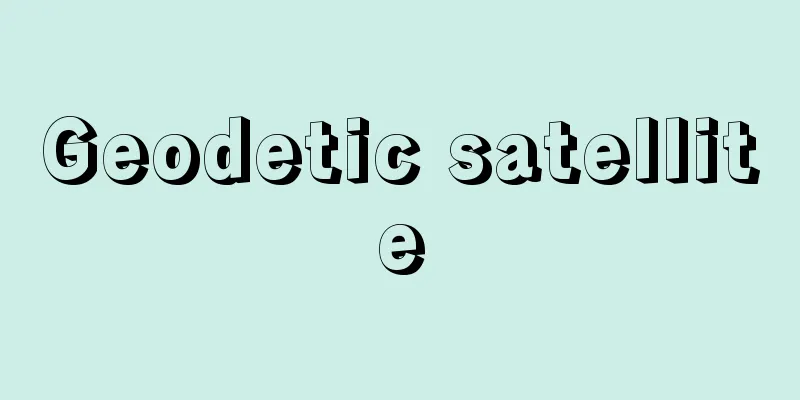Geodetic satellite

|
An artificial satellite launched to be used in astronomical surveying as a substitute for natural celestial bodies. The early ones were huge hollow spheres, and observed their reflection of the sun's rays. They were much closer than celestial bodies, and moved at high speeds, making them suitable for precise observation. In the 1960s, it became possible to precisely measure the distance between each observation point on the ground by emitting radio waves, and the use of geodetic satellites made it possible to determine the position of any point on Earth, such as the middle of an ocean or a desert, with an accuracy of 2 to 3 meters. In particular, the Naval Navigation Satellite System (NNSS), a set of six geodetic satellites, was a system that could constantly receive radio waves from any one of the six satellites anywhere on Earth, allowing accurate determination of the position, but it was abolished in 1999 due to the spread of the Global Positioning System (GPS), which was developed as the successor to the NNSS. Since the 1990s, GPS has become a satellite positioning system that is indispensable for navigation, surveying, etc., but it is called a positioning satellite rather than a geodetic satellite. [Yukio Ozaki and Hiromichi Tsuji, November 18, 2016] [References] | | | |Source: Shogakukan Encyclopedia Nipponica About Encyclopedia Nipponica Information | Legend |
|
天文測量において自然の天体のかわりとして観測に使うため打ち上げられた人工衛星。初期のものは巨大な中空の球形で、それが太陽光線を反射して光るのを観測した。距離が天体よりはるかに近く、また運行速度も大きいので精密な観測に適していた。1960年代になると自ら電波を発射して地上の各観測点との間の距離を精密に測定できるようになり、測地衛星の利用により地球上の任意の地点、たとえば大洋の真ん中や、大砂漠の中央などでも、その地点の地球上での位置を誤差2~3メートルの精度で決定できるようになった。とくに航海用衛星NNSS(海軍衛星航法システム)という6個一組の測地衛星は、6個のうちのいずれか一つからの電波を地球上のどこででも絶えず受信でき、その位置を正確に求められるシステムであったが、NNSSの後継として開発された全地球測位システム(GPS)の普及により1999年に廃止された。GPSは1990年代以降、航法や測量等に不可欠な衛星測位システムとなっているが、測地衛星ではなく、測位衛星とよばれる。 [尾崎幸男・辻 宏道 2016年11月18日] [参照項目] | | | |出典 小学館 日本大百科全書(ニッポニカ)日本大百科全書(ニッポニカ)について 情報 | 凡例 |
<<: Geodesy (English spelling)
Recommend
Ayara - Ayara
…The organization consists of 11 Angas (the 12th ...
Seimin Murata
1761-1837 A metal caster from the late Edo period...
Valabhī (English spelling) Valabhi
...Indian dynasty. At the end of the 5th century,...
Young Ireland Party
A political group formed in the mid-19th century ...
FEN - FEN
Abbreviation for Far East Network. Broadcasting s...
Osuki - Osukigo
…the name given to the peoples who lived in centr...
Stem stand - Kukutachi
〘Noun〙 ("Kuku" is the same as "kuki...
Cantiga de amor - Cantiga de amor
…From the 13th century to the mid-14th century, t...
Gandhara Art
Gandhara is an ancient place name in the northwes...
Dago
…An island in the northwest of the Republic of Es...
Onikobe Onsenkyo
A group of hot springs in Onikobe, Naruko Onsen, ...
Antony and Cleopatra
…She is often considered to be one of the two gre...
Celosia argentea (English spelling) Celosiaargentea
...For cut flowers, flower beds, and potted plant...
West End
A colloquial name for the area in the center of L...
Bruges (English spelling)
A commercial and industrial city in the Flanders r...


![Matsukawa [village] - Matsukawa](/upload/images/67cce6e037219.webp)






